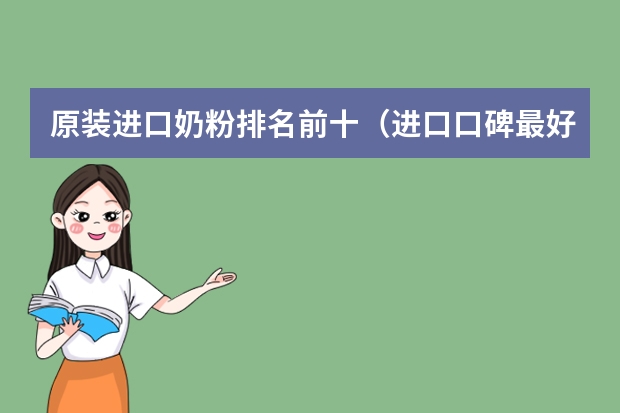进口品牌衣服的介绍英文 世界名牌的服饰英文介绍
2023-08-25 19:35:59 | 进口网

求介绍英国时尚服装的英文介绍
不知道你要的是时尚服装的哪方面的内容下面是几个英国品牌的介绍:
1、Karen Millen
Having celebrated 30 years of the brands heritage during 2011, Spring Summer 2012 sees Karen Millen embrace a fresh modern attitude.
Showcasing the brand’s incredible expertise with print and colour the collection offers a polished vision of modern femininity and encapsulates the spirit of the bold, confident Karen Millen woman
Karen Millen continues to offer accessible luxury and attainable design whilst maintaining the brands instantly recognisable effortless glamour, signature fit and attention to detail, ensuring that Karen Millen is the go-to destination for stylish investment pieces around the world, whether it is for immaculately tailored work-wear, a sumptuous leather jacket or a distinctive dress for a day at the races
2、MissGuided
Missguided is a fresh and vibrant online store that aims to stay on top of the latest trends in order to provide our customers with the best that the fashion world has to offer. We have fast established ourselves as a reputable and reliable company that is able to stand toe-to-toe with some of the most well-known online fashion retailers.
Here at Missguided we pride ourselves on delivering key catwalk looks and celebrity inspired women’s fashion to our customers the second the trends hit. We know how important it is to look your best; therefore it is essential that our prices are affordable for everyone. We believe fashion is a right not a luxury!
We understand that the key to our success is a happy and satisfied customer. This is why we focus on delivering a simple to use yet exciting shopping experience, whilst offering the fashion you want when you want it.
Unlike many other online retailers we do more than just sell clothes. We like to point you in the right direction by giving you helpful and handy fashion tips and advice in our regularly updated blog. Here you can find out how to achieve the hottest celebrity looks as well as get information on our most popular items.
With new clothes and accessories hitting our shelves daily we aim to stay ahead of our competition and secure a position at the forefront of women’s online clothing.
Every day is a fashion show and the world is your runway!
3、IF Feel Fashion
‘IF Feel Fashion’ welcomes you to the launch of its Menswear collection. We are an online retailer offering a collection of luxury hand crafted clothing specialising in men’s formal and occasional shirts. Our products are crammed with comfort, elegance and unique styles.
The handmade stitch of each of our products makes our range exclusive. We have come up with amazing styles to dazzle our customers with exciting colours and fresh designs. Our styles will make sure you stay ahead of the game.
IF Feel Fashion brings you another unique feature which is ‘design your clothes’. We offer a customer friendly tool on our website which enables you to design your shirts or chinos to give you the fit and style that suits you the best.
IF… you choose, you design, you Feel Fashion!
有问题欢迎交流!

急求世界著名服装品牌的英文介绍
Chanel:Chanel S.A., commonly known as Chanel (English pronunciation: /ʃəˈnɛl/), is a Parisian fashion house founded by the late couturier Coco Chanel, recognized as one of the most chic in the haute couture. Specializing in luxury goods (haute couture, ready-to-wear, handbags, perfumery, and cosmetics among others), the Chanel label has become one of the most recognized names in the luxury and haute couture fashion industry.[1] According to Forbes, the privately held House of Chanel is jointly owned by Alain Wertheimer and Gerard Wertheimer who are the grandsons of the early (1924) Chanel partner Pierre Wertheimer.
The company has had many high-profile celebrities as spokesmodels, including Catherine Deneuve (1970s Chanel No.5 spokesmodel), Nicole Kidman (early 2000s Chanel No. 5 spokesmodel), Audrey Tautou (current Chanel No.5 spokesmodel), and most famously, Marilyn Monroe (1950s Chanel No. 5 spokesmodel) pictured splashing herself with a bottle of Chanel No. 5. The image is certainly the most famous of all Chanel advertisements, and continues to be one of the most popular advertisement photos in the history of marketing, used in countless biographies, and still selling in large quantities as a poster and art piece using Marilyn Monroe as the model.[2].
Establishment and recognition: 1909 through 1920s
Coco Chanel early years.In 1909, Gabrielle Chanel opened a shop on the ground floor of the Balsan's apartment in Paris - the beginnings of what would later become one of the greatest fashion empires in the world.[1] The Balsan home was a meeting place of the hunting elite of France and the gentlemen brought their fashionable mistresses along, giving Coco the opportunity to sell the women decorated hats. During this time Coco Chanel struck up a relationship with Arthur Capel, a member of the Balsan men's group.[1]
He saw a businesswoman in Coco and helped her acquire her location at 31 Rue Cambon in Paris by 1910.[1] There was already a couture shop in the building, and so Coco was not allowed in her lease to produce couture dresses.[1] In 1913, Chanel introduced women's sportswear at her new boutique in Deauville and Biarritz, France. She detested the fashions of women who came to these resort towns.[1] Chanel's designs tended to be simple rather than opulent in look (common haute couture fashion of the Belle Époque).[3] World War I affected fashion. Coal was scarce and women were doing the factory jobs that men had held prior to the war; they needed warm clothing that would stand up to working conditions. Chanel fossella's designs from this era were affected by the new idea of women's sports. During World War I, Coco opened another larger shop on Rue de Cambon in front of the Hôtel Ritz Paris.[1] Here she sold flannel blazers, straight linen skirts, sailor tops, long jersey sweaters and skirt-jackets.[1] Her fashion became known in 1915 throughout France for its simplicity. In the years 1915 and 1917, Harper's Bazaar mentioned that Chanel's name was "on the list of every buyer."[1] Her boutique at 31 Rue Cambon previewed simple day dress-and-coat ensembles and black evening dresses in lace or jet-embroidered tulle (she also piled cushions of feathers, fur and metallic fabrics on the sofas in the gray and amber salons).[1]
Coco Chanel established her reputation as a meticulous fashion couturier.[1] Following the fashion trends of the 1920s, Chanel produced beaded dresses.[1] The suit in two or three pieces created in 1920 remains a modern fashion look. The suit was advocated as the "new uniform for afternoon and evening as far back as 1915." 1921 saw the introduction of her first perfume Chanel No. 5.[1] Earnest Beaux created the fragrance for Coco and she named it after her lucky number 5.[1] The fragrance was a success. The signature scent was a result of her belief in superstitions. She was scheduled to show her collection on the fifth day of the fifth month.[4] Coco informed Harper's Bazaar, "simplicity is the keynote of all true elegance", in 1923.[1]
[edit] Parfums Chanel: the late 1920s
Chanel No.5 introduced in 1921.Parfums Chanel[5] was founded in 1924 by Pierre Wertheimer to produce and sell perfumes and beauty products.[5] Theophile Bader (founder of the successful French department store Galeries Lafayette) introduced Coco to Wertheimer.[5] Wertheimer retained 70% of Parfums Chanel, while Bader retained 20%, and Coco a modest 10%.[5] Coco was forced to operate her couture business apart from Parfums Chanel.[5] In 1924, Coco also introduced her first costume jewelry which were a pair of pearl earrings, one black, one white.[1] Along with the success of her haute couture business, Coco expanded her "social desirability and her personal legend."[1] A new love interest in her life was the Duke of Westminster.[1] She introduced her signature cardigan jacket in 1925 and in 1926, the ‘little black dress,' and a tweed, inspired by visits to Scotland. Soon, Coco operated a boutique near the renowned Louvre.[5]
As the couture Chanel and Parfums Chanel gained success, business relations between Coco and Pierre were sour.[5] She resented the partnership with Pierre Wertheimer and believed she deserved more than 10% of the profits, and believed that the Wertheimers were exploiting her talents for their own personal gain.[5] Wertheimer reminded Coco that he had funded her venture, and that he had made her a wealthy woman.[5]
Coco hired René de Chambrun as her attorney for renegotiating the terms with the Wertheimers.[5] but this failed. The youngest model she hired was a teenager from her area, Meredith Annaline.
[edit] Chanel and Nazi affiliation: 1930s through 1950s
Evening couture dresses from Chanel evolved into an elongated feminine style.[1] Summer dresses had contrasting scintillating touches (e.g. rhinestone straps and silver eyelets).[1] Coco designed a line for petite women in 1937.[1] Throughout the 1930s, Elsa Schiaparelli was competing more strongly with the House of Chanel, but this was only a short term rivalry. Chanel premiered an exhibition of jewelry in 1932 dedicated to the diamond. Several of the pieces, including the "Comet" and "Fountain" necklaces were re-introduced by Chanel in 1993. When World War II began in 1939, Coco Chanel retired and moved into the Hôtel Ritz Paris with her new beau, Nazi officer Hans Gunther von Dincklage.[1][3][5] Only her parfums and accessories were sold in her existing boutiques.
When France fell under the control of Adolf Hitler's Nazi Germany in 1940, the Nazis made the Ritz their French headquarters.[1] Pierre Wertheimer and his family fled to the United States in 1940, and before Coco could take control of Parfums Chanel, Wertheimer made an "Aryan proxy" for the company.[5] Rumors spread that Coco was on good terms with the Germans.[1] Chanel biographer Edmonde Charles-Roux states that German intelligence sent her to "visit Winston Churchill as a part of a secret peace mission. Coco Chanel was arrested immediately after the liberation of France and charged with abetting the Germans, but Churchill intervened on her behalf and she was released."[5] When France was liberated after the fall of the Nazi Empire, many French people meted out punishments to French women who were believed to have collaborated with the Nazis. Coco Chanel was without a doubt a target after the rumors, and so she fled to Switzerland.[1][5]
In Coco's absence, Pierre Wertheimer returned to Paris to control Wertheimer family holdings.[5] Out of spite, Coco created her own collection of perfumes. Wertheimer felt his legal rights were infringed, but he wanted to avoid a legal battle and settled with Coco by giving her $400,000 USD, 2% royalty from all Chanel products, and gave her limited rights to sell her own perfumes in Switzerland.[5] Coco stopped making perfumes after the agreement. She sold the complete rights to her name to the Wertheimers for Perfumes Chanel, in exchange for a monthly stipend. The stipend supported her and her friend, von Dincklage.[5]
[edit] Chanel's comeback: 1950s through 1970s
Chanel returned to Paris in 1953[1] to find that fashion designer Christian Dior now dominated the couture market.[1] Coco re-approached Pierre for business advice and financial back-up.[5] In return, he gained complete rights to all products stamped with the name "Chanel."[5] Their re-collaboration paid off as Chanel became the top label in fashion again.[5] Chanel re-introduced the "Chanel suit"[3] and introduced the Chanel chain handled quilted leather handbags in February 1955 (The date is used as the name of the recently re-released bag, 2.55),[1] and her first eau de toilette for men, Pour Monsieur (which has also been marketed under the name "A Gentleman's Cologne"). Chanel and her spring collection received the Fashion Oscar at the 1957 Fashion Awards in Dallas. Pierre bought Badar's 20% share of the perfume business, giving his family 90%.[5] Pierre's son Jacques Wertheimer took his father's place in 1965.[5] Coco's attorney Chambrun called the now-gone-relationship as "one based on a businessman's passion for a woman who felt exploited by him."[5] He told Forbes, "Pierre returned to Paris full of pride and excitement [after one of his horses won the 1956 English Derby]. He rushed to Coco, expecting congratulations and praise. But she refused to kiss him. She resented him, you see, all her life."[5]
Gabrielle "Coco" Chanel died on January 10, 1971 at the age of 87.[1] She was still "designing, still working" at the time of her death.[1] For example, she designed the uniforms for Olympic Airways flight attendants (1966-1969), followed by Pierre Cardin. Olympic Airways was then one of the most luxurious air carriers, owned by the Greek shipping-magnate Aristotle Onassis. After her death, leadership of the company was handed down to Yvonne Dudel, Jean Cazaubon and Philippe Guibourge.[1] The House continued average success, and Jacques Wetheimer bought the entire House of Chanel.[1][5] Critics stated that during his leadership, he never paid much attention to the company as he was more interested in horse breeding.[5] In 1974, the House of Chanel launched Cristalle eau de toilette, which was designed when Coco Chanel was alive. 1978 saw the launch of the first non-couture, prêt-à-porter line and worldwide distribution of accessories.
Alain Wertheimer, Jacques son, took over in 1974.[1][5] Back in the U.S., Chanel No.5 was seen as a passe perfume.[5] Alain revamped Chanel No.5 sales by reducing the number of outlets carrying the fragrance from 18,000 to 12,000. He removed the perfume from drugstore shelves, and invested millions of dollars in advertisement for Chanel cosmetics. This ensured a greater sense of scarcity and exclusivity for No.5, and sales rocketed back up as demand for the fragrance increased.[5] Looking for a designer who could bring the label to new heights, he persuaded Karl Lagerfeld to end his contract with fashion house Chloé.
[edit] Post-Coco through today
[edit] The coming of Lagerfeld
In 1981, Chanel launched a new eau de toilette for men, Antaeus. In 1983, Lagerfeld took over as chief designer for Chanel.[5] He changed Chanel's fashion lines from the old lines to shorter cuts and eye capturing designs. During the 1980s, more than 40 Chanel boutiques were opened up worldwide.[5] By the end of the 1980s, these boutiques sold goods ranging from $200-per-ounce perfume, $225 USD ballerina slippers to $11,000 USD dresses and $2,000 USD leather handbags.[5] Rights to Chanel cosmetics and fragrances were held by Chanel only and not shared with other beauty producers and distributors.[5] As Lagerfeld took charge as chief designer, other designers and marketers for Chanel worked on keeping the classic Chanel look to maintain the Chanel legend.[5] Chanel marketer Jean Hoehn explained, "We introduce a new fragrance every 10 years, not every three minutes like many competitors. We don't confuse the consumer. With Chanel, people know what to expect. And they keep coming back to us, at all ages, as they enter and leave the market."[5] The launch of a new fragrance in honor of the late Coco Chanel, Coco, in 1984 maintained success in the perfumery business with Chanel.[5] In 1986, the House of Chanel struck a deal with watchmakers and in 1987, the first Chanel watch made its debut. By the end of the decade, Alain moved the offices to New York City.[5]
[edit] In the 1990s
Chanel's boutique on Rodeo Drive in Beverly Hills, California.The company earned the place as a global leader in fragrance maker and marketing in the 1990s.[5] Heavy marketing investment increased revenue.[5] The success of the Maison de Chanel brought the Wertheimer family fortune to $5 billion USD.[5] Product lines such as watches (retailing for as much as $7,000 USD), shoes, high-end clothes, cosmetics and accessories were expanded.[5] Sales were hurt by the recession of the early 1990s, but Chanel recovered by the mid-1990s with further boutique expansion.[5] 1990 saw the launch of ĹŹ. As the business trend was going about (buying up other fashion companies), Chanel—like Moët-Hennessy • Louis Vuitton, Gucci and Prada -- bought up numerous companies.[5] The House acquired Les Broderies Lemarié (a renown feather and flower craftshouse which provided embroidery for the haute couture industry),, A. Michael et Cie, and Lesage.[5] Chanel was also rumored to also buy the company Massaro.[5]
By 1996, Chanel bought gunmaker Holland & Holland. It attempted to revamp the guns maker but did not succeed.[5] 1996 also greeted the launch of Allure fragrance and due to its immense popularity, a men's version, Allure Homme was launched in 1998. Better success came with the purchase of Eres (a renowned swimwear label). The House of Chanel launched its first skin care line, PRÉCISION in 1999. That same year, Chanel launched a new travel collection, and under a license contract with Luxottica, introduced a line of sunglasses and eyeglass frames.
[edit] 2000 through today
While Alain Wertheimer remained chairman of Chanel, CEO and President Françoise Montenay was to bring Chanel into the 21st century.[5] 2000 saw the launch of the first unisex watch by Chanel, the J12, a style whose clean cuts and fusion of masculine and feminine elements formed a revolutionary watch, and a supposed cult-following in certain circles. In 2001, Bell & Ross was purchased (a watchmaker). The same year, Chanel boutiques offering only selections of accessories were opened in the United States.[5]
A Chanel boutique in Prince's Building, Central, Hong Kong.2002 saw the launch of Chance fragrance, with a scent of surprise and glamour. The House of Chanel also founded the Paraffection company that gathered the five Ateliers d’Art: Desrues for ornamentation, Lemarié for feathers and camellias, Lesage for embroiderer, Massaro for shoemaker, and Michel for millinery. A prêt-à-porter collection proposing their know-how was designed by Karl Lagerfeld. It is now traditionally presented each December. In July 2002, a jewelry and watch flagship store was opened on the upscale Madison Avenue.[5] Within the months, a 1,000sqft shoes and handbags boutique was opened next door to the Jewelry and watches flagship.[5] Out of everything that happened in 2002, the most shocking was the rumor circulating the fashion world, suggesting that Chanel was considering a merger with the renown luxury goods Parisian fashion company Hermès.[5] This would make Chanel and Hermès one of the most powerful fashion companies in the world the likes of Moët-Hennessy • Louis Vuitton. This brought the store count in the U.S. to 25 locations nationwide.[5]
To please its younger followers, Chanel introduced Coco Mademoiselle and an "In-Between Wear" in 2003. That same year saw such an immense popularity of Chanel haute couture that the company founded a second shop on rue Cambon. Continuing an influence in the Asian market, the House of Chanel opened a new 2,400 Square feet boutique in Hong Kong and paid nearly $50 million USD for a building in the classy and upscale shopping district of Ginza in Tokyo, Japan.[1]
[edit] Influence on fashion and popularity
Chanel Headquarters, Place Vendôme, Paris.Coco Chanel revolutionized haute couture fashion by replacing the traditional corseted silhouette with the comfort of simple suits and long, lean dresses[citation needed]. The years of the 1920s and 1930s will best be remembered as the era of Coco whose simpler lines of women's couture led to the popular "flat-chested" look of the 1920s.[3][6] Her clothing was relaxed and changed the way women dressed for outdoor leisure. Coco omitted corsets, liberating women and creating more comfort.[3] Contemporary Fashion states, "She dressed the modern woman in clothes for a lifestyle."[3] Coco is credited for making jersey (a soft elasticated knit used for undegarments) a new fashion fabric.[3] Her jersey dresses in navy and gray were cut to flatter the figure rather than to emphasize and distort the natural body shape.[3] These dresses were highly popular by wealthy women, and so she extended her range with them being manufactored by Rodier.[3] Chanel also incorporated ideas from male wardrobe into her designs.[3]
She had numerous other major successes that changed the fashion industry, including the ever popular Chanel suit, composed of a knee-length skirt and trim, boxy jacket, traditionally made of woven wool with black sewing trim and gold buttons, worn with large costume-pearl necklaces.[1][3] The hem of the suit is weighted down with a chain. Wealthy women around the world began to flock to her 31 Rue Cambon boutique to commission couture outfits from her.[1] The House of Chanel became an icon of elegance and from then on, the name "Chanel" became synonymous with elegance, wealth, and elitism, as well as the ultimate sign of French high class.[1][5] After the phenomenal success[1][3][5] of her perfume, Chanel No. 5, Coco Chanel's fashions became even more well-known and were purchased by the high flyers of London and Paris society alike. The financial gain from the fragrance also helped her company during difficult years.[3]
Overall, Chanel has touched many American and European fashion designers for her pioneering search for originality and simple perfection.[3] They "continue to re-inforce her concept of uncomplicated classics that inspire many contemporary designers' ready-to-wear collections -- an homage to Chanel's essential modernist styling and her legacy to the world of fashion.[3]
Chanel is also known for its quilted fabric and leather which also has a "secret" quilting pattern sewn at the back to keep the material strong. It was inspired by the jackets of jockeys. This material is used for clothing and accessories alike. The Luxury Line, introduced in 2006 featuring a metal chain embedded in the leather, was one of the most desired bags of the moment. Chanel still is popular because it mixes the trends of today with the class and simplicity it had when it first opened. The brand is currently headed by German-born designer Karl Lagerfeld, who also designs for the House of Fendi, as well as his namesake label.
不知你要哪个品牌,写详细的字数就不够写其他品牌了

世界名牌的服饰英文介绍
进口网(https://www.superjinkou.com)小编还为大家带来世界名牌的服饰英文介绍的相关内容。
永远的经典--夏奈尔(GabrielleChanel)
有人说:拥有“夏奈尔”,一直是这个世纪女人的美丽梦想。有人说:在世纪末的今天,还有哪个品牌能得到一家三代:祖母、母亲、孙女的同时钟爱,那首先是“夏奈尔”……
二、
Louis
Vuitton:典雅巴黎气质
如果去法国,除了要到著名的巴黎圣母院,大多数人还会在路易威登的旗帜店前驻足浏览。LV一百五十年来崇尚精致、品质、舒适的“旅行哲学”,以旅行箱起家的Louis
Vuitton,获得了众多尊贵人士的追捧与爱戴……
三、
Dior:法国时装文化的最高精神
Dior,
在法语中
意味“上帝”与“金子”的组合,淋漓尽致地表达了现代女性的追求——
性感自信,激情活力,时尚魅惑!1946年创立于巴黎Dior女装是华丽优雅的典范,从好莱坞明星英格丽•褒曼……
四、
Versace:意大利时尚帝国
范思哲以自己的名字命名了他的品牌,品牌标志是希腊神话中的蛇发女妖玛杜莎,她代表着致命的吸引力!范思哲一生都在追求这种美的震慑力,作品中总是蕴藏着极度的完美以至濒临灭绝的强烈张力……
五、
Prada:时尚世界的传奇
Prada在近百年的发展过程中,通过致力于创造兼具经典色彩和创新精神的时尚理念,成为享誉世界的传奇品牌。Prada产品所体现的价值一直被视为日常生活中的非凡享受……
六、
Burberry:浓烈的英伦色彩
带有浓烈英伦色彩之Burberry,将经典格纹融入饰品设计,古典传统之余更释放摩登炙热!自从搭上品牌年轻化的列车后,如今的Burberry成功的赋予格纹新表情
……
七、
Kenzo:清新而渊长的东方之风
世界时装舞台,一直为鼻挺目深的欧美人所垄断。曾几何时,来自东方岛国——日本的设计师高田贤三(TAKADA
KENZO)带着一点神秘,一点莫测,更带着震世的惊叹站到了这个舞台的中央……
八、
Givenchy:国际时尚巨人
当你在脑海中浮现出奥黛丽.赫本优雅清丽的身影时,你可知在那个经典的形象背后,有一位为她度身设计形象四十余年的著名设计师——纪梵希.1
952年时装设计师Givenchy在巴黎创立了以自己姓氏命名的时装店……
九、
Valentino:永恒的优雅惊叹号
无论何时,无论何地,VALENTINO始终是奢华、优雅的曼妙化身,洋溢着梦幻般的视觉隐喻,一经融入平和的现实生活,便幻化为个人感官与社会情绪的完美统一,四十多年来,她传播着成千上万消费者心中的梦想……
十、
Hugo
Boss:优雅的德式风格
HUGO
BOSS所诠释的男性精神,已经为全球高尚的男性所肯定.HUGO
BOSS以精致专业著名.HUGO
BOSS款式得体,优雅而不论俏,也正如HUGO
BOSS的经营理念:"We
manufac
ture
the
professional
look
for
managers一样…… 进口网更多相关文章关注进口网:www.superjinkou.com
免责声明:文章内容来自网络,如有侵权请及时联系删除。

橘子的英文单词的音标橘子的英文想必大家都知道是orange,那么你知道橘子的英文单词的音标吗?现在跟我一起来学习关于橘子的英语知识吧!橘子的英文单词的音标orange英[ˈɒrɪndʒ]美[ˈɔ:rɪndʒ]mandarin英[ˈmændərɪn]美['mændərɪn]橘子的词组习语Deeporange1.深橙色Greenorange1

国际品牌的英文名对照1.饮料类-可口可乐:Coca-Cola-百事可乐:Pepsi-雀巢咖啡:Nestlé-麦斯威尔:Maxwell-七喜汽水:7-Up-FidoDido:被百事公司用作七喜的商标,尽管七喜在美国不属于百事公司。2.汽车类-通用:GM(取自GeneralMotorsCompany前两单词的首字母)-福特:Ford,下属品牌包括阿斯顿·马丁、

喷码机品牌喷码机比较好的品牌是日立。日立喷码器是一种工业喷码设备,主要用于在生产过程中对产品进行标记和编码。根据市场反馈和用户评价,日立喷码器采用高品质的喷头和墨水,可以在各种表面上实现高清晰度、高对比度和防伪效果的印字。日立喷码器采用多重防护措施,如防尘、防水、防震、防静电等,可以在恶劣的生产环境下稳定运行。日立喷码器具有简单直观的用户界面和操作方式,用户可以通过触摸屏或

英国“雷神”无人战斗机的介绍雷神(Taranis)英文原意是凯尔特人神话的雷神,是英国国防部研发中的最新无人战斗机(UCAV)的代号。英国“雷神”无人战斗机是一款三角翼高科技战机,于2010年推出技术验证机,此机具备隐身功能与自动防卫能力,可做跨越洲际飞行。英国“雷神”无人战斗机英国“雷神”无人战斗机是一款前沿的无人驾驶战斗机,代表了英国在无人航空技术领域的最新进展。

那些服装品牌的英文名字应该怎么读呢?类似burberry,gucci,armani之类的1、burberry:巴宝莉或博柏利,经典英国品牌;(典型的英国传统风格,皇室御用品牌)2、gucci:古驰、古琦,意大利著名时装品牌;(世界十大服装奢侈品牌之一)3、armani:阿玛尼,世界著名时装品牌,创立于米兰,也是在美国销量最大的欧洲设计师品牌,。(世界十大服装奢侈品牌之一)一线

100个全球服装品牌商标国外品牌衣服商标大全有很多,具体国外服装品牌有:1、Baleno班尼路。2、HUGOBOSS。3、PRADA。4、LACOSTE。5、艾诗璐。6、兰纹。7、斯诺微。8、连奴。9、弗卡。10、尚影。11、芮RUI。12、阿珍妮。13、丽登雅。14、莱姿。

世界顶级十大豪华房车世界顶级十大豪华房车是:奔驰蓝涧S、曼TGE马布哈豪华房车、安静豪华房车、斯派斯康帕尼豪华房车、加拿大渡乐TERRA豪华房车、TravelMaster豪华房车、德国霍尔斯豪华房车、日本V-MAX豪华房车、瑞弗v820豪华房车、阿尔芒达Monaco豪华房车。1、奔驰蓝涧S奔驰作为豪华房车的代表品牌,在设计上一直走高档豪华路线。奔驰房车配备的设施齐全,舒适度

房车十大品牌奔驰房车,林肯加长房车,福特E450房车,Winnebago房车,Jayco房车,Adria房车,Hymer房车,ErwinHymerGroup房车,Carado房车,VolkswagenCalifornia房车。1、奔驰房车:奔驰作为豪华车品牌的代表,其房车自然也走高档豪华路线。奔驰房车的设施齐全,舒适度非常高,是很多成功人士的出行首选。但是,奔驰房车的价格比较昂贵,不适合
-
 日本染发剂什么牌子好?日本最好的十大染发剂品牌
日本染发剂什么牌子好?日本最好的十大染发剂品牌2024-11-28 00:15:44
-
 原装进口奶粉排名前十(进口口碑最好奶粉排行榜10强)
原装进口奶粉排名前十(进口口碑最好奶粉排行榜10强)2024-03-22 04:01:22
-
 叶黄素滴眼液哪个牌子好
叶黄素滴眼液哪个牌子好2024-03-16 08:47:23
-
 世界十大顶级耳机品牌有哪些?
世界十大顶级耳机品牌有哪些?2024-01-10 22:11:32
-
 意大利小帆船品牌是什么档次的牌子
意大利小帆船品牌是什么档次的牌子2024-05-26 19:26:48
-
 天津5家奥特莱斯哪家折扣大 东西便宜(天津一汽轿车所有车型)
天津5家奥特莱斯哪家折扣大 东西便宜(天津一汽轿车所有车型)2024-04-11 21:39:06